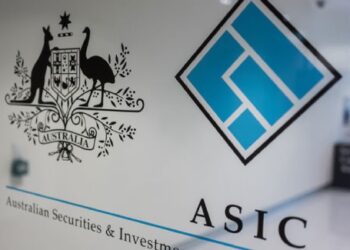In its response to the Financial System Inquiry interim report, ASFA said while it did not support any “specific limitations” on the establishment of SMSFs, the ATO should play a role in providing more information on average and likely costs to those applying to set up an SMSF, describing these desired communications as “health warnings”.
ASFA argued that prospective trustees should be required to “indicate the amount of funds intended to be used at the time of establishment of the SMSF or in a reasonable period thereafter”.
The association noted that based on data from 2012, SMSFs with $50,000 or less in assets had an average operating expense ratio of 9.5 per cent, with the ratio falling to one per cent for SMSFs with more than $500,000.
“As can be expected, the estimated operating expense ratio for SMSFs declines in direct proportion to the increased size of the fund,” it argued in the response.
ASFA also suggested the ATO provide more information about trustee duties and legal obligations and ask prospective trustees questions on a targeted basis.
“While there should not be a requirement to demonstrate competence as a trustee, such questions would at the very least identify for prospective trustees issues and matters they should be aware of to successfully operate an SMSF,” said ASFA.
ASFA also acknowledged its support for the removal of the accountant’s exemption leading to increased obligations for accountants regarding what advice they can provide and the circumstances in which they can provide it.
It noted, however, that following the changes in licensing, it will not be required for accountants to consider whether the client is better off moving from an existing superannuation product to an SMSF.
ASFA also argued that the “transition period for obtaining a license is too long and, in the interests of consumers, should be reduced to 12 months from when the provisions were changed”.
Any policy concern, ASFA argued, should be about whether an “informed choice is being made by those establishing SMSFs and that SMSF trustees continue to assess the cost efficiency of their decisions”.
“In this context, there is a need for appropriate licensing and enforcing of required behaviours for all advisers advising on or promoting SMSFs, including individuals and firms promoting setting up an SMSF in order to purchase a residential investment property,” said ASFA.



An interesting, but one-sided argument from ASFA. Maybe all industry and commercial funds should be required to issue similar cautionary statement, in easily readable format rather that multi-page legal jargon, outlining all the fingers they have in their pies so their customers (members?) know where their money is going to. Organisations like ASFA would do better to (try to) explain why investing with their members is better, rather than bagging their competition.
APRA should issue health warnings to members of Union Super Funds with balances of over $500,000 that it is costing them on average $4,250 pa just to manage their funds, and that is without advice.
There is no need, as the ATO already provides this information https://www.ato.gov.au/Super/S… To send even more information simply imposes more administrative costs on SMSFs !!
Once again accountants are being asked to get an an AFSL when SMSFs are often set up by business types who use their accountants to administrator the superannuation structure. There is more to SMSF than superannuation and savings.
As George stated about Industry Funds – every sector is conflicted in one way or another
SMSF being established with minimal balances and borrowing for property is a major concern
As is Industry Funds not advising what the real cost is – how can you run advertising for the past five years or so without impacting performance
Why does the conversation surrounding setting up SMSFs always come down to minimum account balances? Because people have a vested interest in managing FUM. For example, not once have I heard someone talk about the time needed to run a SMSF. What about the trustee who has $1M in his SMSF who does not even have the time to lodge his own SMSF tax return on time. Should he be managing his own Fund? Probably not. But these other factors are rarely mentioned because everyone is so focused on the $$$. Wonder why?
One way to solve this problem would be to limit borrowing and negative gearing on LRBA’s to 50% of the value of the property. Removes most of the property spruikers and “low asset” SMSF’s being set up just to buy a property.
I would be interested to see what the ASAF calculates the costs are of holding $400,000 in an industry fund as opposed to a SMSF? I suspect more then 1%.
Hear about this , When are we going to ask the ATO to issue licences as to get up in the morning. Talking about Nanny state and country. This is going too far.
Do you suggest that ASFA undertakes the interview as to the amount of funds to be invested in the Fund. Do we licence the trustees with an L Plate licence until they prove themselves?
I don’t know where ASFA gets its prices from. 1% for a $500,000 fund sounds too expensive for an average fund. I think the price is more like $2,500 to $3,500 and many funds are less.
I hope those who make the decisions speak to ethical and professional people before they rely on very dubious “advice” from organizations like ASFA.
Actually ASFA do have a point, as a SMSF Adviser I am constantly coming across funds set up by the minority with very little in the fund and do not have the ability to maximise the contribution. Why because the person who advised the client to do this did not have the clients best interests in their mind rather their own pockets. And this annoys me that this minority still think it is ok.
Take your blinkers off boys! There are thousands of SMSF’s being opened out there that should not be. One circumstance is not enough balance to make them cost effective. Good on those who wish to run things themselves, but the whole thing in the end needs to add up financially. Were we the only practice in Australia working our tails off pre EOFY closing down SMSF’s that should not have been opened in the first place?
Noting new here – ASFA bashing SMSFs again. No conflict of interest here 🙂
What’s the problem this extra cost is seeking to solve? Is it people starting a SMSF in June with $50k, then rolling $400k over in August; or is it seeking to put as many barriers as poossible to prevent people leaving large funds that ASFA represents? It would be nice is ASFA sought to simplify the overall system rather than add more red tape and costs.
Hi Michael,
It is time that AFSA butted out of the discussions surrounding SMSF’s.
Kind regards,
Eileen
Typical of ASFA. Maybe ASIC should issue warnings about super accounts in Industry Fund with their un-elected conflicted boards and the commissions and fees paid advisers to consultants. People are making informed choices. They are informed just how doggy many industry funds are, how their investments are often self serving and how their boards are led by self serving consultants and they are moving their money to SMSFs where they can control their own future